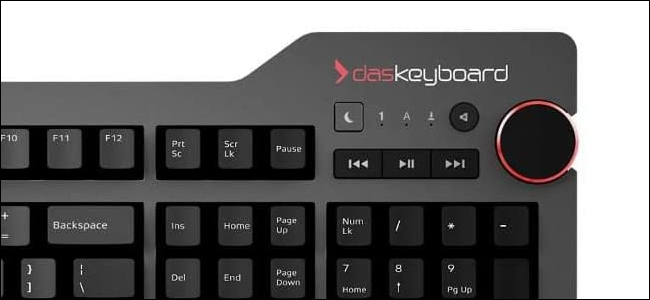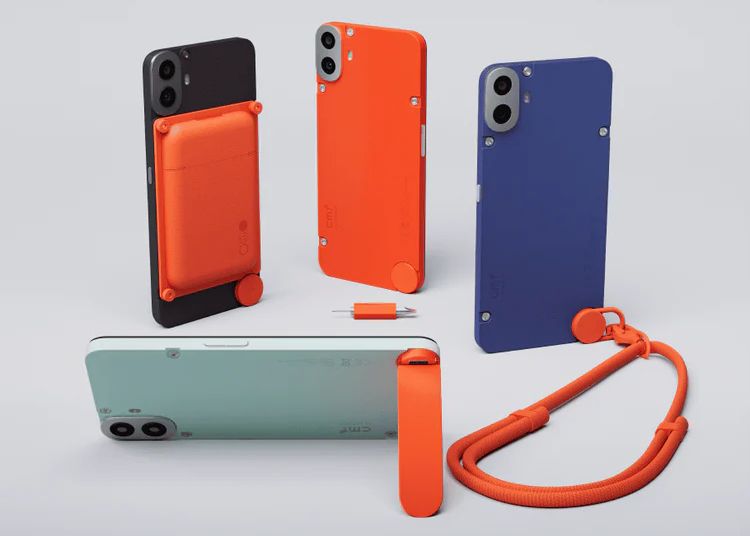Key Takeaways
- Volume wheels are popular in other devices for their intuitive and convenient design, offering precise and accessible control.
- Smartphones lack volume wheels due to challenges like design limitations, water vulnerability, and accidental adjustments.
- Touch controls on smartphones can offer granular volume adjustments, potentially surpassing the convenience of physical volume wheels.
Think about the last time you struggled to find the perfect volume on your phone using the volume buttons. While buttons have their place, there’s something undeniably satisfying about rotating wheels to adjust the volume. But why are smartphones missing them?
So Many Devices Have Volume Wheels
Volume wheels and knobs are becoming more and more common on hardware, regardless of their relation to audio. From computer keyboards and headsets to smart home devices, many devices are adopting knobs. The reason for their popularity is simple: they offer a quick and intuitive way of controlling the audio levels without the need to press buttons or navigate through menus.
Interestingly, volume wheels aren’t even a modern invention. They’ve been out there for decades. Vintage radios, car stereos, and early sound systems, all came bundled with a knob to adjust volume and serve other purposes. The design persisted because of its practicality.
Despite their prevalence in many devices, volume wheels are still largely absent from smartphones. That raises an important question. What’s keeping phone manufacturers from adding this feature when others have adopted it so easily?
Having a Volume Wheel Is Intuitive
No matter how you look at it, a wheel mechanism is more convenient and user-friendly than pressing or holding down buttons. The simplicity of rotating a wheel makes it an appealing option for me.
A volume wheel offers smooth, continuous control. You can quickly adjust the volume with a single motion, making it more ideal than pressing the same button multiple times. Sure, you can also hold down the volume button, but that is less accurate in getting the proper volume. Moreover, volume buttons don’t give you much precision in controlling the volume.
On many Android phones, including Samsung, you have only 15 volume levels changeable using the buttons. There are instances when the gap between two consecutive levels is too much. I often feel that the sound on the 7th level is too low and on the 8th level it is too loud when watching videos. With a volume wheel, there shouldn’t be a problem with precision. The gaps between different volume levels can be adjusted more precisely.
Why Don’t Phones Have Them?
So, volume wheels have the upper hand over traditional buttons for many reasons. But it’s not as simple on phones as it may seem. They also pose many challenges for both users and manufacturers.
Design and Ergonomics Limitations
Probably the biggest hurdle to implementing volume wheels in smartphones is design decisions. Modern smartphones are all about sleek, minimalist designs, with every millimeter of space optimized for thinness and portability. Buttons don’t take up much space. But a full circle wheel will take up significant internal space. It will also affect external space, since companies will have to plan how they want to design the button island and still accommodate a wheel.
Ergonomically, finding the right spot to place the volume wheel is a bit tricky. When CMF first teased the Phone 1, everyone thought the knob on the picture would be for volume and other purposes. Putting it there seems to be better than putting it in the same place as the volume buttons. But then you, as a user, will have to retrain your muscle memory.
Water and Dust Protection
Another new challenge volume wheels bring is being more vulnerable to water and dust. If you look closely at a mouse where the wheel is located, you’ll see that the chamber has open gaps. The result? It attracts dust inside.
For a mouse or other peripherals, that might not be a huge issue. But for a phone, any dust or water entering its internal chambers can be brutal. Having a volume wheel of the same design as a computer mouse will invite such disasters.
Accidental Adjustments
The purpose of having a volume wheel is that it can be turned easily because it wouldn’t be as hard as a volume button. But, there’s a catch—there will be accidental turns! Especially when the phone is in your pocket. So many times I get my phone out of my pocket only to see accidental touches. Accidental volume increments will become common with a knob.
However, with some software implementations, it’s possible to make the situation better. For example, the knob will only work if the phone screen is on. This removes any chance of accidental adjustments when the phone is in your pocket. But that also means every time you want to even slightly change the volume, you need to unlock the phone.
Touch Controls Can Be More Granular Than Wheels
Volume controls don’t have to be a binary option (buttons or wheels) on smartphones. You can also consider using the touch controls. Once you press the volume button, you should see the volume center appear. Then you can use your finger to adjust the volume as you like.
Honestly, this might be the best way to control the volume of your phone, even better than having knobs. If convenience is the only thing that matters, then there’s no need to go against the norm and put a volume wheel on a phone. Touch controls are enough. Moreover, if you want even more advanced controls, many apps let you have them.
The idea of having volume wheels on a smartphone isn’t that far-fetched, despite the potential challenges. It’s hard not to imagine the convenience it could bring to many consumers. With technology constantly evolving, who knows? Maybe one day, phone manufacturers will find a way to overcome these limitations and bring the simplicity of volume wheels to our pockets.








